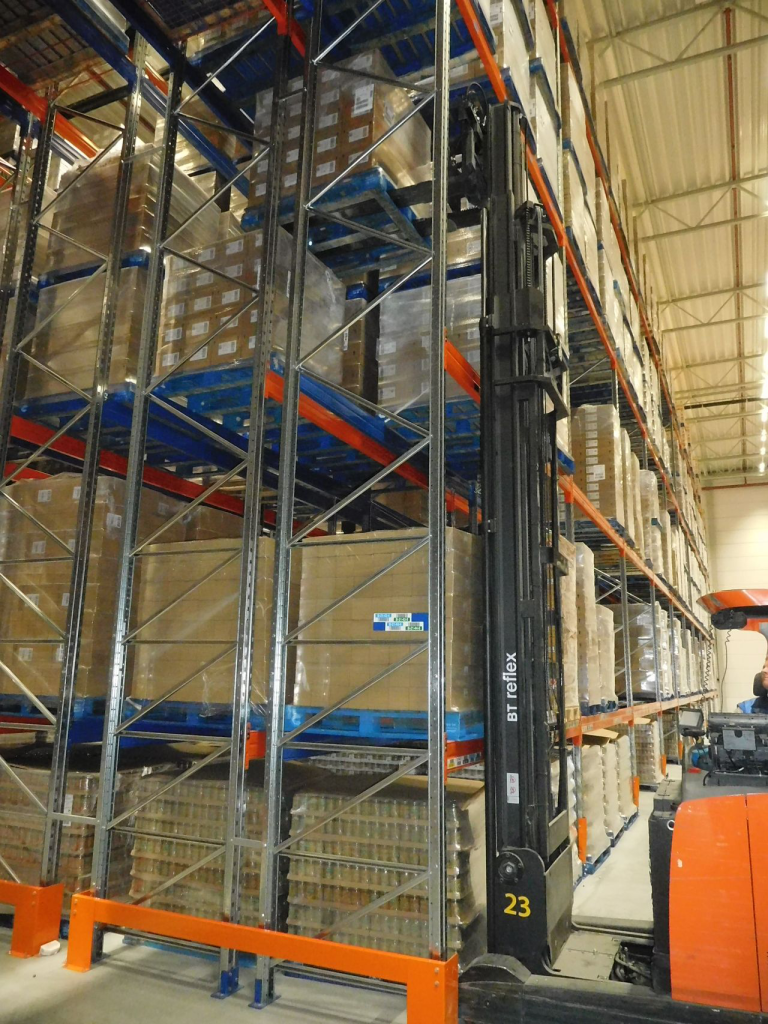
Double-deep pallet storage instantly gives you up to 30% more storage locations than conventional pallet racking.
How it works: Double-deep pallet racking allows for higher storage density by utilizing the depth of the rack. Instead of a single pallet deep, it can accommodate two pallets deep, effectively doubling the storage capacity within the same footprint. This is particularly advantageous for businesses with limited warehouse space.
Benefits of Double-Deep Pallet Storage: By maximizing storage density, double-deep pallet storage helps optimize the use of available space. This can lead to reduced requirements for additional warehouse expansions or leasing other storage facilities, resulting in cost savings.
Access and Selectivity: Although double-deep pallet racking reduces immediate selectivity compared to single-deep systems, it still provides reasonably good selectivity. Most of the time, the front pallet can be accessed directly, while the back pallet may require the use of specialized handling equipment like reach trucks with telescopic extendable forks. Despite this, it offers better accessibility compared to other high-density storage solutions like drive-in racking or push-back racking.
Inventory Management Advantages: Double-deep racking can be beneficial for inventory management. It allows for efficient organization and retrieval of goods based on the First-In-First-Out (FIFO) or Last-In-First-Out (LIFO) principles, depending on how the racking system is configured. This can be important for businesses dealing with perishable goods or time-sensitive inventory.
Cost Savings: Double-deep pallet storage can lead to cost savings in various ways. By utilizing the available space more effectively, businesses can avoid or delay the need for additional storage infrastructure investment. It can also reduce labor costs associated with handling and storing goods, as it optimizes the use of warehouse space and streamlines material handling operations.
It’s important to note that the suitability of double-deep pallet storage depends on factors such as the size and weight of the pallets, the turnover rate of goods, and the specific operational requirements of the business.














